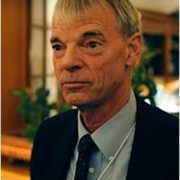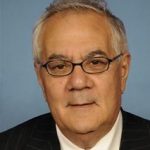I have always been a sucker for a visiting Nobel Prize winner in economics. So when I heard that Dr. Michael Spence was passing through town, I was on the next BART train. Michael was here to promote his latest book, The Next Convergence; The Future of Economic Growth in a Multispeed World.
Michael believes that world GDP will triple over the next 40 years, and that the bulk of that growth will come from emerging markets, which will account for half of all GDP within 5-10 years. China is now moving the needle on the global economy big time.
The great challenge moving forward is that the emerging markets can no longer use proven economic models that worked in the past. Investing in aggressive export sectors that pulled their countries forward worked well for Japan, and then South Korea, Taiwan, Singapore, Malaysia, and Thailand. But China and India are now too big, and the US too small to replicate that feat.
Furthermore, the big BRICS are now pushing up against the theoretical limits to growth. China is now consuming up to 80% of some commodities, and further demand could bring dramatic price increases. While America accomplished its economic miracle with oil at $1 a barrel, today?s emerging markets are going to have to pull it off at $100 a barrel. China is now in the middle income range of $4,000-$8,000 per capita, where a lot of developing countries tend to get stuck.
These countries have also reached their environmental limits, with pollution so severe that it threatens to stifle growth. If you don?t believe him, try taking a summer afternoon stroll in Beijing sometime, and see if you can breathe afterwards. The current environmental mess in China will cost a fortune to clean up.
The answer to is accelerate technological development, eventually bring it up to western standards. Throwing coddled state protected enterprises to the wolves and allowing creative destruction to work its way will also be important. Asia already has a big advantage in that their entire infrastructure is brand new, so they don?t have to ?obsolete? it first to move forward, as we do.
Exports become less important in this model. In fact, you can see how this works by tracking shoe maker Nike?s production base over the years, where Spence was once a board member. It started in Japan, and then migrated to South Korea, Taiwan, China, and ended up in Vietnam.
The great revelation for Michael in doing his research, the ?aha? moment, was to discover that economic growth is not an economic issue, it is a political one. Great leadership is the common ingredient among the most successful countries. Governments that are too big fall into the abyss of central planning. Those that are too small can?t adequately invest in infrastructure to prime the pump for the private sector.
Michael has identified 13 countries currently in the sweet spot, including Brazil (EWZ), South Korea (EWY), Taiwan (EWT), Singapore (EWS), Hong Kong (EWY), Thailand (TF), Indonesia (IDX), Oman, Botswana, Malaysia (EWM), China (FXI), Malta, and surprisingly, Japan (EWJ). Since I believe that emerging markets will lead the next leg up in global equity markets, this gives me a great short list to work from.
You may recall that Michael is the Harvard professor who, along with Joseph Stiglitz, won his prize in 2001 for the dynamics of information flows and market development. A Rhodes Scholar, he is also the former dean of the Stanford business school. Among his recent chores has been assisting the Chinese government to develop their upcoming 12th five year plan for economic development.







